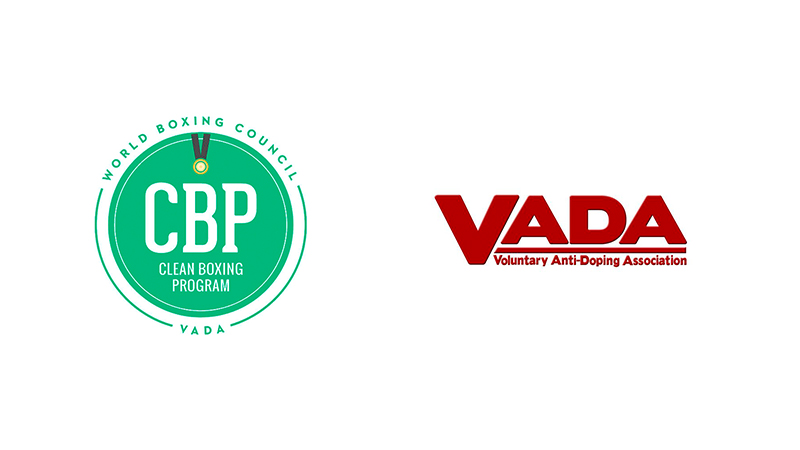
Voluntary Anti-Doping Association Official Prohibited List
This document contains the Official Prohibited List (Substances and Methods) of the Voluntary Anti-Doping Association (VADA). VADA guidelines concerning these specific substances and groups are intended to closely track internationally recognized standards for substances prohibited by sport, such as the World Anti-Doping Agency (WADA) Official Prohibited List of 2022. Therefore, nomenclature for these substances, classification groups and other uses by the WADA Prohibited List will be preserved, unless otherwise specified by VADA.
VADA Prohibited List
PROHIBITED SUBSTANCES
The following classification groups and substances are prohibited at all times during participation in the VADA program. The following classification groups and substances listed herein are not restricted to the specifically-listed common or chemical names, nor are they restricted to the specific compounds or isomers listed below. Moreover, VADA has the right, at any time, to modify, edit, and add any substance or method according to any new laws, guidelines, VADA policies, or anti-doping ideals.
S0. NON-APPROVED SUBSTANCES
Any pharmacological substance which is not addressed by any of the subsequent sections of the List and with no current approval by any governmental regulatory health authority for human therapeutic use (e.g. drugs under pre-clinical or clinical development or discontinued, designer drugs, substances approved only for veterinary use) is prohibited at all times.
S1. ANABOLIC AGENTS
Anabolic agents are prohibited.
1. Anabolic Androgenic Steroids (AAS)
when administered exogenously, including but not limited to:
1-Androstenediol (5a -androst-1-ene-3β,17β-diol)
1-Androstenedione (5a -androst-1-ene-3,17-dione)
1-Androsterone (3a -hydroxy-5a-androst-1-ene-17-one)
1-Epiandrosterone (3β-hydroxy-5a-androst-1-ene-17-one)
1-Testosterone (17β-hydroxy-5a-androst-1 en-3-one)
4-Androstenediol (androst-4-ene-3β, 17β-diol)
4-Hydroxytestosterone (4,17β-dihydroxyandrost-4-en-3-one)
5-Androstenedione (androst-5-ene-3,17-dione)
7a-hydroxy-DHEA7β-hydroxy-DHEA
7-Keto-DHEA
19-Norandrostenediol (estr-4-ene-3,17-diol)
19-Norandrostenedione (estr-4-ene-3,17-dione)
Androstanolone (5a-dihydrotestosterone, 17β-hydroxy-5a-androstan-3-one) Androstenediol (androst-5-ene-3β,17β-diol)
Androstenedione (androst-4-ene-3,17-dione)
Bolasterone
Boldenone
Boldione (androsta-1,4-diene-3,17-dione)
Calusterone
Clostebol
Danazol ([1,2]oxazolo[4’,5’:2,3]pregna-4-en-20-yn-17a -ol) Dehydrochlormethyltestosterone (4-chloro-17 β -hydroxy-17a-methylandrosta-1,4-dien-3- one)
Desoxymethyltestosterone (17a-methyl-5a -androst-2-en-17 β-ol and 17 a-methyl-5 a- androst-3-en-17β-ol)
Drostanolone
Epiandrosterone (3β-hydroxy-5a-androstan-17-one)
Epi-dihydrosterone (17β-hydroxy-5β-androstan-3-one)
Epitestosterone
Ethylestrenol (19-norpregna-4-en-17a-ol)
Fluoxymesterone
Formebolone
Furazabol (17a -methyl [1,2,5]oxadiazolo(3’,4’:2,3)-5a-androstan-17β-ol)
Gestrinone
Mestanolone
Mesterolone
Metandienone (17 β-hydroxy-17a -methylandrosta-1,4-dien-3-one)
Metenolone
Methandriol
Methasterone (17 β-hydroxy-2a,17a-dimethyl-5a-androstan-3-one)
Methyl-1-testosterone (17β-hydroxy-17a-methyl-5a -androst-1-en-3-one)
Methylclostebol
Methyldienolone (17 β-hydroxy-17a-methylestra-4,9-dien-3-one)
Methylnortestosterone (17 β-hydroxy-17a-methylestr-5a -4-en-3-one)
Methyltestosterone
Metribolone (methyltrienolone, 17β-hydroxy-17a-methylestra-4,9,11-trien-3-one) Mibolerone
Nandrolone (19-nortestosterone)
Norboletone
Norclostebol (4-chloro-17β-ol-estr-4-en-3-one)
Norethandrolone
Oxabolone
7-Keto-DHEA
19-Norandrostenediol (estr-4-ene-3,17-diol)
19-Norandrostenedione (estr-4-ene-3,17-dione)
Androstanolone (5a-dihydrotestosterone, 17β-hydroxy-5a-androstan-3-one) Androstenediol (androst-5-ene-3β,17β-diol)
Androstenedione (androst-4-ene-3,17-dione)
Bolasterone
Boldenone
Boldione (androsta-1,4-diene-3,17-dione)
Calusterone
Clostebol
Danazol ([1,2]oxazolo[4’,5’:2,3]pregna-4-en-20-yn-17a -ol) Dehydrochlormethyltestosterone (4-chloro-17 β -hydroxy-17a-methylandrosta-1,4-dien-3- one)
Desoxymethyltestosterone (17a-methyl-5a -androst-2-en-17 β-ol and 17 a-methyl-5 a- androst-3-en-17β-ol)
Drostanolone
Epiandrosterone (3β-hydroxy-5a-androstan-17-one)
Epi-dihydrosterone (17β-hydroxy-5β-androstan-3-one)
Epitestosterone
Ethylestrenol (19-norpregna-4-en-17a-ol)
Fluoxymesterone
Formebolone
Furazabol (17a -methyl [1,2,5]oxadiazolo(3’,4’:2,3)-5a-androstan-17β-ol)
Gestrinone
Mestanolone
Mesterolone
Metandienone (17 β-hydroxy-17a -methylandrosta-1,4-dien-3-one)
Metenolone
Methandriol
Methasterone (17 β-hydroxy-2a,17a-dimethyl-5a-androstan-3-one)
Methyl-1-testosterone (17β-hydroxy-17a-methyl-5a -androst-1-en-3-one)
Methylclostebol
Methyldienolone (17 β-hydroxy-17a-methylestra-4,9-dien-3-one)
Methylnortestosterone (17 β-hydroxy-17a-methylestr-5a -4-en-3-one)
Methyltestosterone
Metribolone (methyltrienolone, 17β-hydroxy-17a-methylestra-4,9,11-trien-3-one) Mibolerone
Nandrolone (19-nortestosterone)
Norboletone
Norclostebol (4-chloro-17β-ol-estr-4-en-3-one)
Norethandrolone
Oxabolone
Oxandrolone 0xymesterone
Oxymetholone
Prasterone (dehydroepiandrosterone, DHEA, 3β-hydroxyandrost-5-en-17-one) Prostanozol (17β-((tetrahydropyran-2-yl)oxy)-1’H-pyrazolo(3,4:2,3)-5a-androstane) Quinbolone
Stanozolol
Stenbolone
Testosterone
Tetrahydrogestrinone (17-hydroxy-18a-homo-19-nor-17a-pregna-4,9,11-trien-3-one) Tibolone
Trenbolone (17 β-hydroxyestr-4,9,11-trien-3-one)
and other substances with a similar chemical structure or similar biological effect(s).
2. Other Anabolic Agents
Including, but not limited to:
• Clenbuterol, osilodrostat, selective androgen receptor modulators (SARMs, e.g. andarine, LGD-4033 (ligandrol), enobosarm (ostarine) and RADA 140), zeranol and zilpatrol
S2. PEPTIDE HORMONES, GROWTH FACTORS, RELATED SUBSTANCES, AND MIMETICS
The following substances, and other substances with similar chemical structure or similar biological effects(s), are prohibited:
Including, but not limited to:
1. Erythropoietins (EPO) and agents affecting erythropoiesis, including, but not limited to:
1.1 Erythropoietin-receptor agonists, e.g.
Darbepoetins (dEPO);
Erythropoietins (EPO);
EPO-based constructs (e.g. EPO-Fc, methoxy polyethylene glycol-epoetin beta(CERA))EPO-mimetic agents and their constructs (e.g. CNTO-530 and peginesatide).
Erythropoietins (EPO);
EPO-based constructs (e.g. EPO-Fc, methoxy polyethylene glycol-epoetin beta(CERA))EPO-mimetic agents and their constructs (e.g. CNTO-530 and peginesatide).
1.2 Hypoxia-inducible factor (HIF) activating agents, e.g.
Cobalt;Daprodustat (GSK1278863);
IOX2;
Molidustat (BAY 85-3934);
Molidustat (BAY 85-3934);
Roxadustat (FG-4592);
Vadadustat (AKB-6548);
Xenon.
1.3 GATA inhibitors, e.g.
K-11706
1.4 Transforming growth factor beta (TGF-β) signaling inhibitors, e.g.
Luspatercept;
Sotatercept.
1.5 Innate repair receptor agonists, e.g.
Asialo EPO;
Carbamylated EPO (CEPO).
2. Peptide Hormones and their Releasing Factors,
2.1 Chorionic gonadotrophin (CG) and luteinizing hormone (LH) and their releasing factors in males, e.g. buserelin, deslorelin, gonadorelin, goserelin, leuprorelin, nafarelin and triptorelin;
2.2 Corticotrophins and their releasing factors, e.g. corticorelin;
2.3 Growth hormone (GH), its analogues and fragments including, but not limited to:
growth hormone analogues, e.g. lonapegsomatropin, somapacitan and somatrogongrowth hormone fragments, e.g. AOD-9604 and hGH 176-191
2.4 growth hormone releasing factors, including, but not limited to:growth hormone-releasing (GHRH) and its analogues, e.g. CJC-12 93, CJC-1295, sermorelin and tesamorelin)growth hormone secretagogues (GHS) and its mimetics, (e.g. lenomorelin (ghrelin), anamorelin, ipamorelin, macimorelin and tabimorelin)
GH-releasing peptides (GHRPs) (e.g. alexamorelin, GHRP-1,
GHRP-2 (pralmorelin), GHRP-3, GHRP-4, GHRP-5, GHRP-6, and examorelin (hexarelin))
3. Growth Factors and Growth Factor Modulators, including, but not limited to:
Fibroblast growth factors (FGFs)
Hepatocyte growth factor (HGF)
Insulin-like growth factor-1 (IGF-1) and its analogues
Mechano growth factors (MGFs)
Platelet-derived growth factor (PDGF)
Thymosin- β4 and its derivatives e.g. TB-500
Vascular endothelial growth factor (VEGF)and other growth factors or growth factor modulators affecting muscle, tendon or ligament protein synthesis/degradation, vascularisation, energy utilization, regenerative capacity or fibre type switching.
S3. BETA-2 AGONISTS
All selective and non-selective beta-2 agonists, including all optical isomers, are prohibited.
Including, but not limited to:
Arformoterol;
Fenoterol;
Formoterol;
Higenamine;
Indacaterol;
Levosalbutamol;
Olodaterol;
Procaterol;
Reproterol;
Salbutamol;
Salmeterol;
Terbutaline;
Tretoquinol (trimetoquinol)
Procaterol;
Reproterol;
Salbutamol;
Salmeterol;
Terbutaline;
Tretoquinol (trimetoquinol)
Tulobuterol;
Vilanterol.Exceptions:
• Inhaled salbutamol: maximum 1600 micrograms over 24 hours in divided doses not to exceed 600 micrograms over 8 hours starting from any dose;
• Inhaled formoterol: maximum delivered dose of 54 micrograms over 24 hours; • Inhaled salmeterol: maximum 200 micrograms over 24 hours;
• Inhaled vilanterol: maximum 25 micrograms over 24 hours.
Note:
The presence in urine of salbutamol in excess of 1000 ng/ml or formoterol in excess of 40 ng/ml is not consistent with therapeutic use of the substance and will be considered as an Adverse Analytical Finding (AAF) unless the Athlete proves, through a controlled pharmacokinetic study, that the abnormal result was the consequence of a therapeutic dose (by inhalation) up to the maximum dose indicated above.
S4. HORMONE AND METABOLIC MODULATORS
The following hormone and metabolic modulators are prohibited:
- Aromatase inhibitors including, but not limited to: 2-Androstenol (5a-androst-2-en-17-ol) 2-Androstenone (5a-androst-2-en-17-one) 3-Androstenol (5a-androst-3-en-17-ol) 3-Androstenone (5a-androst-3-en-17-one) 4-Androstene-3,6,17 trione (6-oxo) AminoglutethimideAnastrozole
Androsta-1,4,6-triene-3,17-dione (androstatrienedione) Androsta-3,5-diene-7,17-dione (arimistane) Exemestane
Formestane
Letrozole
Testolactone - Anti-estrogenic substances (anti-estrogens and selective estrogen receptor modulators (SERMS)). Including, but not limited to:
Bazedoxifene Clomifene Cyclofenil Fulvestrant
Ospemifene Raloxifene Tamoxifen Toremifene
3. Agents preventing activin receptor IIB activation including, but not limited, to:
Activin A-neutralizing antibodies
Activin receptor IIB competitors such as: Decoy activin receptors (e.g. ACE-031)
Anti-activin receptor IIB antibodies (e.g. bimagrumab) Myostatin inhibitors such as:
Agents reducing or ablating myostatin expression
Myostatin-binding proteins (e.g. follistatin, myostatin, propeptide) Myostatin-neutralizing antibodies (e.g. domagrozumab, landogrozumab,
stamulumab)
4. Metabolic modulators:
- 4.1 Activators of the AMP-activated protein kinase (AMPK), e.g. AICAR, SR9009;and peroxisome proliferator-activated receptor delta (PPARδ) agonists, e.g. 2-(2-methyl-4-((4-methyl-2-(4-(trifluoromethyl) phenyl)thiazol-5- yl)methylthio)phenoxy) acetic acid (GW 1516, GW501516);
- 4.2 Insulins and insulin-mimetics
- 4.3 Meldonium
- 4.4 Trimetazidine
S5. DIURETICS AND OTHER MASKING AGENTS
The following diuretics and masking agents are prohibited, as are other substances with a similar chemical structure or similar biological effect(s).
Including, but not limited to:
• Desmopressin; probenecid; plasma expanders, e.g. intravenous administration of albumin, dextran, hydroxyethyl starch and mannitol.
• Acetazolamide; amiloride; bumetanide; canrenone; chlortalidone; etacrynic acid; furosemide; indapamide; metolazone; spironolactone; thiazides, e.g. bendroflumethiazide, chlorothiazide and hydrochlorothiazide; triamterene and vaptans, e.g. tolvaptan.
Exceptions:
• Drospirenone; pamabrom; and topical ophthalmic administration of carbonic anhydrase inhibitors (e.g. dorzolamide, brinzolamide);
• Local administration of felypressin in dental anaesthesia
Note: The detection in an Athlete’s Sample at all times, as applicable, of any quantity of the following substances subject to threshold limits: formoterol, salbutamol, cathine, ephedrine, methylephedrine and pseudoephedrine, in conjunction with a diuretic or masking agent, will be considered as an Adverse Analytical Finding (AAF) unless the Athlete has an approved Therapeutic Use Exemption (TUE) for that substance in addition to the one granted for the diuretic or masking agent.
S6. STIMULANTS
All stimulants, including all optical isomers, e.g. d- and l- where relevant, are prohibited.
Stimulants include:
A: Non-Specified Stimulants:
Adrafinil
Amfepramone
Amfetamine
Amfetaminil
Amiphenazole
Benfluorex
Benzylpiperazine
Bromantan
Clobenzorex
Cocaine
Cropropamide
Crotetamide
Fencamine
Fenetylline
Fenfluramine
Fenproporex
Fonturancetam (4-phenylpiracetam (carphedon))
Furfenorex
Lisdexamfetamine
Mefenorex
Mephentermine
Mesocarb
Methamphetamine (d-)
p-methylamphetamine
Modafinil
Norfenfluramine
Phendimetrazine
Phentermine
Prenylamine
Prolintane
A stimulant not expressly listed in this section is a Specified Substance.
b. Specified Stimulants.Including, but not limited to:
3-Methylhexan-2-amine (1,2-dimethylpentylamine)
4-fluoromethyphenidate
4-Methylhexan-2-amine (methylhexaneamine)
4-Methylhexan-2-amine (methylhexaneamine)
4-Methylpentan-2-amine (1,3 dimethylbutylamine)
5-Methylhexan-2-amine (1,4-dimethylpentylamine)
Benzfetamine
Cathine**
Cathinone and its analogues, e.g. mephedrone, methedrone, and α- pyrrolidinovalerophenone
Dimetamfetamine (dimethylamphetamine)
Ephedrine***
Epinephrine**** (adrenaline)
Etamivan
Ethyphenidate
Etilamfetamine
Etilefrine
Famprofazone
Fenbutrazate
Fencamfamin
Heptaminol
Hydroxyamfetamine (parahydroxyaphetamine)
Isometheptene
Levmetamfetamine
Meclofenoxate
Methylenedioxymethamphetamine
Methyephedrine***
Methylnaphthidate (((+)-methyl-2-(naphthalen-2-yl)-2-(piperidin-2-yl)acetate) Methylphenidate
Nikethaminde
Norfenefrine
Octodrine (1,5-dimethylhexylamine)
Octopamine;
Oxilofrine (methylsynephrine)
Pemoline
Penetrazol
Phenethylamine and its derivatives
Phenmetrazine
Phenpromethamine
Propylhexedrine
Pseudoephedrine*****
Selegiline
Sibutramine
Strychnine
Tenamfetamine (methylenedioxyamphetamine)
Tuaminoheptane
Ephedrine***
Epinephrine**** (adrenaline)
Etamivan
Ethyphenidate
Etilamfetamine
Etilefrine
Famprofazone
Fenbutrazate
Fencamfamin
Heptaminol
Hydroxyamfetamine (parahydroxyaphetamine)
Isometheptene
Levmetamfetamine
Meclofenoxate
Methylenedioxymethamphetamine
Methyephedrine***
Methylnaphthidate (((+)-methyl-2-(naphthalen-2-yl)-2-(piperidin-2-yl)acetate) Methylphenidate
Nikethaminde
Norfenefrine
Octodrine (1,5-dimethylhexylamine)
Octopamine;
Oxilofrine (methylsynephrine)
Pemoline
Penetrazol
Phenethylamine and its derivatives
Phenmetrazine
Phenpromethamine
Propylhexedrine
Pseudoephedrine*****
Selegiline
Sibutramine
Strychnine
Tenamfetamine (methylenedioxyamphetamine)
Tuaminoheptane
and other substances with a similar chemical structure or similar biological effect(s).
Exceptions:
• Clonidine
• Imidazole derivatives for dermatological, nasal or ophthalmic use (e.g. brimondine, clonazoline, fenoxazoline, indanazoline, naphazoline, oxymetazoline, xylometazoline) and those stimulants included in WADA’s 2022 Monitoring Program*.
*Bupropion, caffeine, nicotine, phenylephrine, phenylpropanolamine, pipradrol, and synephrine: These substances are included in WADA’s 2022 Monitoring Program,, and are not considered Prohibited Substances.
**Cathine (d-norpseudoephedrine and its l-isomer: Prohibited when its concentration in urine is greater than 5 micrograms per milliliter.
***Ephedrine and methylephedrine: Prohibited when the concentration of either in urine is greater 10 micrograms per milliliter.
****Epinephrine (adrenaline): Not prohibited in local administration, e.g. nasal, ophthalmologic, or co-administration with local anaesthetic agents.
*****Pseudoephedrine: Prohibited when its concentration in urine is greater than 150 micrograms per milliliter.
S7. NARCOTICS
Substance of Abuse in this section: diamorphine (heroin)
The following narcotics, including all optical isomers, e.g. d- and l- where relevant are prohibited:
Buprenorphine
Dextromoramide
Diamorphine (heroin)
Fentanyl and its derivatives
Hydromorphone
Methadone
Morphine
Nicomorphine
Oxycodone
Oxymorphone
Pentazocine
Pethidine
Morphine
Nicomorphine
Oxycodone
Oxymorphone
Pentazocine
Pethidine
S9. GLUCOCORTICOIDS
All prohibited substances in this class are Specified Substances.
All glucocorticoids are prohibited when administered by any injectable, oral, (including
oromucosal (e.g. buccal, gingival, sublingual)) or rectal routes.
Including but not limited to:
Beclometasone
Bethamethesone
Budesonide
Ciclesonide
Cortisone
Deflazacort
Ciclesonide
Cortisone
Deflazacort
Dexamethasone
Flucortolone
Flunisolide
Fluticasone
Flunisolide
Fluticasone
Hydrocortisone
Methylprednisolone
Mometasone
Prednisolone
Prednisone
Triamcinolone acetonide
NOTE: Other routes of administration (including inhaled, and topical: dental-intracanal, dermal, intranasal, ophthalmological and perianal) are not prohibited when used within the manufacturer’s licensed doses and therapeutic indications,
PROHIBITED METHODS
M1. MANIPULATION OF BLOOD AND BLOOD COMPONENTS
The following are prohibited:
1. The Administration or reintroduction of any quantity of autologous, allogenic (homologous) or heterologous blood, or red blood cell products of any origin into the circulatory system
2. Artificially enhancing the uptake, transport or delivery of oxygen.
Including, but not limited to:
Perfluorochemicals; efaproxiral (RSR13) and modified haemoglobin products, e.g. haemoglobin-based blood substitutes, and microencapsulated haemoglobin products, excluding supplemental oxygen by inhalation.
3. Any form of intravascular manipulation of the blood or blood components by physical or chemical means.
M2. CHEMICAL AND PHYSICAL MANIPULATION
The following are prohibited:
1.Tampering, or Attempting to Tamper, to alter the integrity and validity of Samples collected during Doping Control.
Including, but not limited to:
Sample substitution and/or adulteration, e.g. addition of proteases to Sample.
2. Intravenous infusions and/or injections of more than a total of 100 ml per 12-hour period except for those legitimately received in the course of hospital treatments, surgical procedures or clinical diagnostic investigations.
M3. GENE AND CELL DOPING
The following, with the potential to enhance sport performance, are prohibited:
1. The use of nucleic acids or nucleic acid analogues that may alter genome sequences and/or alter gene expression by any mechanism. This includes but is not limited to gene editing, gene silencing and gene transfer technologies. 2. The use of normal or genetically modified cells.
![]()
Related posts
test


